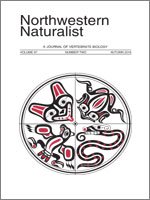Information on the distribution of rare and little known species is critical for managers and biologists challenged with species conservation in an uncertain future. Pacific Martens (Martes caurina) historically resided throughout Oregon and northern California's coastal forests, but were considered extinct until 1996 when a population in northern California was rediscovered. Only 26 verified contemporary (1989–2012) records were known within Oregon prior to this survey. The coastal subspecies (M. c. humboldtensis) was petitioned for listing under the federal Endangered Species Act in 2010. We surveyed for martens during 2014–2015 with 3 separate, non-invasive surveys. We conducted exploratory surveys in 2014, and surveyed at 2 scales during 2015 to confirm the persistence of historical populations (<5 km prior detections) and to determine the limits of current distributions in the region (5–50 km). We surveyed 348 sample units using a total of 72 track plate and 908 remote camera stations for >14 d within a 25,330 km2 area, yielding 355,018 photographs. Martens were detected (photographs, tracks, or genetically verified hair samples) at 72 sample units. We detected 28 individual martens in coastal Oregon using a combination of genetic confirmation and captured individuals. Marten observations were clustered in the Central and South Coast regions, suggesting existing populations have persisted since published observations prior to 1998. We did not locate new populations despite an extensive effort to survey new areas, but did learn a unique population exists in the coastal dunes of Central Oregon. Future research could include surveys at a finer-scale to refine population boundaries and estimate minimum population sizes, better define habitat conditions, and evaluate potential threats to population stability (such as disease, genetic bottlenecks). Until population estimates and trends are known, conservation efforts may benefit from local management actions, such as restricting or eliminating kill-trapping in the Coast Ranges, as well as broad efforts to increase connectivity, especially where existing populations face significant barriers to movement, such as a major roadway (Highway 101). Based on our observations, efforts to increase the size, number, and extent of populations could be valuable for long-term conservation of the species.
How to translate text using browser tools
10 August 2016
Distribution of Pacific Marten in Coastal Oregon
Katie M Moriarty
ACCESS THE FULL ARTICLE

Northwestern Naturalist
Vol. 97 • No. 2
Autumn 2016
Vol. 97 • No. 2
Autumn 2016
American Marten
Camera trap
detectability
distribution
Humboldt Marten
Martes caurina
Oregon




